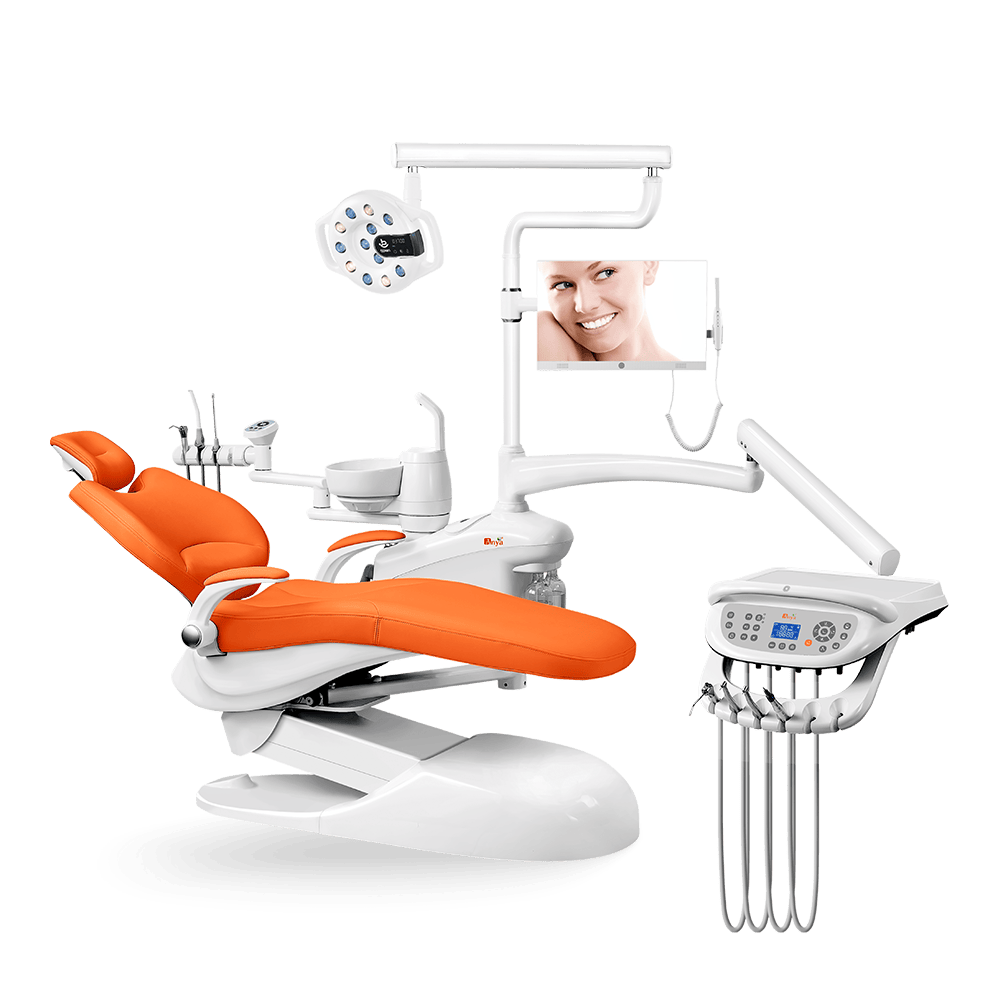In today’s evolving dental practice landscape, selecting the right dental chair represents a critical investment that impacts clinical outcomes, practitioner health, and overall practice efficiency. Modern dental chairs have transcended their traditional role as simple patient seating to become sophisticated technological hubs integrating AI-driven ergonomics, enhanced infection control, and sustainable design. With dentists reporting musculoskeletal disorders at alarming rates and practices facing increased operational costs, choosing the optimal dental chair has become a strategic decision with significant long-term implications.
This comprehensive analysis examines the leading dental chair manufacturers of 2025, evaluating their innovations across ergonomics, technological integration, and sustainability while helping you make an informed procurement decision aligned with contemporary practice requirements.
Key Selection Criteria for 2025 Dental Chairs
When evaluating dental chairs in 2025, several critical factors should inform your decision-making process:
Practitioner Ergonomics: Studies published in the Journal of Dental Ergonomics demonstrate that proper chair design can reduce neck strain by up to 41% and back pain by significant margins. Look for thin, flexible backrests allowing optimal leg positioning and articulating headrests that maximize access to the oral cavity.
Infection Control Capabilities: The 2025 ADA Guidelines mandate that chair surfaces must withstand at least 10,000 cycles of hospital-grade disinfectants without degradation. Seamless upholstery designs with minimal joints (≤0.3% porosity) and integrated antimicrobial technologies have become essential features.
Technological Integration: Modern chairs serve as hubs for digital workflows through integrated sensors, connection ports for imaging equipment, and compatibility with practice management software. Chairs supporting open architecture protocols offer superior future-proofing capabilities.
Sustainability Features: With increasing regulatory pressure on environmental impact, chairs offering water conservation (≤0.8L/minute water consumption) and energy efficiency features deliver both compliance benefits and operational cost savings.
When weighing these factors, consider your practice specialization, current workflow challenges, and long-term growth plans. The optimal chair balances these elements while aligning with your specific clinical requirements and budget constraints.
1. A-dec: Ergonomic Excellence
A-dec maintains its industry leadership through meticulous attention to ergonomic precision and operational reliability. Founded in 1964 in Newberg, Oregon, the company pioneered bringing surgical equipment design principles to dental applications.
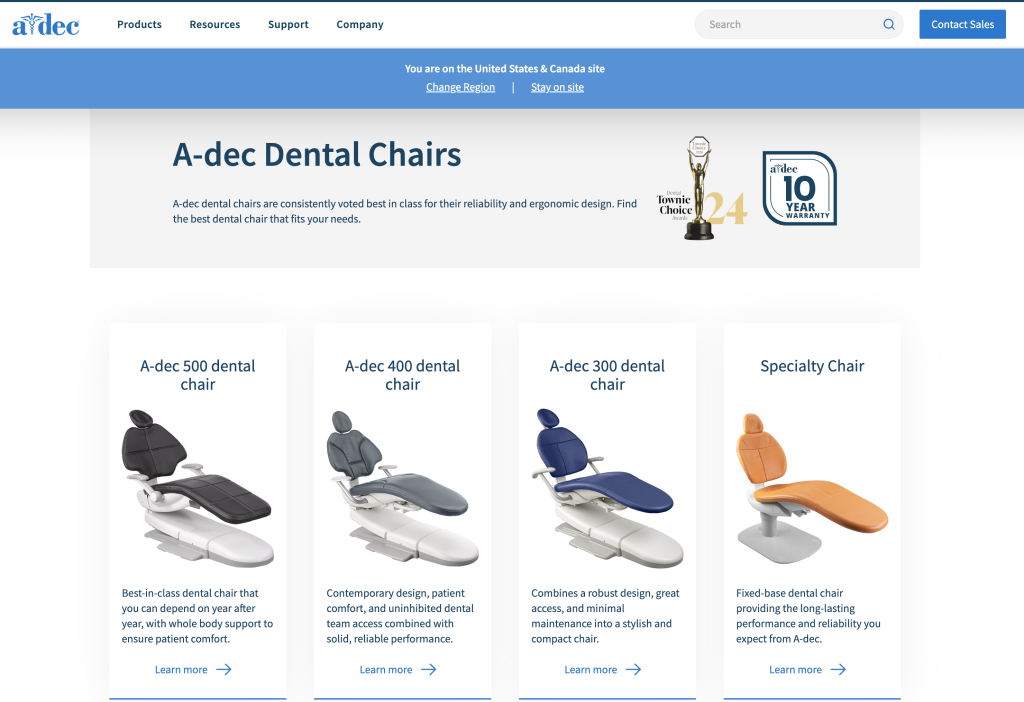
Flagship Models:
- A-dec 500 Series: Features ultra-thin backrests (25-32mm profile), virtual pivot technology, and pressure-mapped cushioning that reduces patient repositioning by up to 41%. These premium units integrate with their 500 Pro delivery systems featuring 7″ touchscreen controls.
- A-dec 400 Series: Balances performance and value with hybrid drive systems (hydraulic base/electric tilt) and dual-articulating headrests.
- A-dec 300 Series: Compact yet robust models offering excellent oral cavity access through thin backrest design while maintaining A-dec’s renowned durability standards.
A-dec chairs command premium pricing ($10,000-$30,000) but offer exceptional value through their documented 20-year operational lifespan and 5-year comprehensive warranty. Their hydraulic systems deliver ultra-soft start/stop motion while supporting up to 500lb (227kg) patient capacity.
According to a 2025 practitioner survey, A-dec chairs were rated highest for long-term reliability with 94% of owners reporting satisfaction after 5+ years of continuous use.
2. Dentsply Sirona: Digital Integration Leaders
Dentsply Sirona continues leading the industry in AI-guided positioning and integrated digital workflows. Formed through the 2016 merger of Dentsply International and Sirona Dental Systems, this global enterprise operates across 40+ countries with its headquarters in Charlotte, North Carolina.
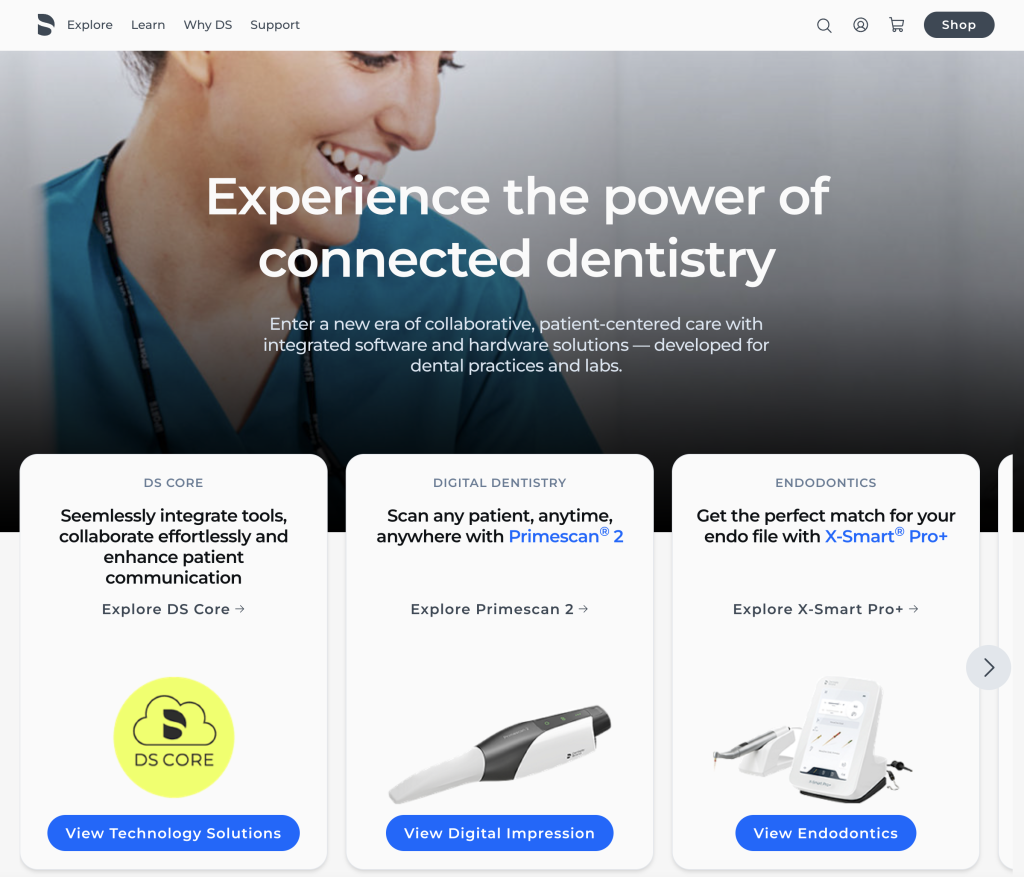
Key Innovations:
- Their flagship chairs synchronize with CEREC® systems, automatically adjusting height and tilt during restoration procedures to optimize practitioner positioning.
- Independent laboratory testing confirms their UV-C sterilization cycles achieve 99.97% pathogen elimination in waterlines, addressing critical concerns about dental unit waterline contamination.
While Dentsply Sirona chairs represent significant investments ($9,999 for refurbished models to $50,000 for premium configurations), they offer comprehensive ecosystem integration that streamlines complex digital workflows. Their focus on cutting-edge technology, customization options, and patient comfort makes them particularly suitable for practices emphasizing advanced restorative procedures.
3. DENTALEZ: Century-Tested Reliability
DENTALEZ leverages over 100 years of manufacturing expertise to deliver dental chairs with exceptional mechanical reliability and straightforward maintenance requirements. Their extensive product portfolio includes the Forest line of customizable dental operatory equipment.
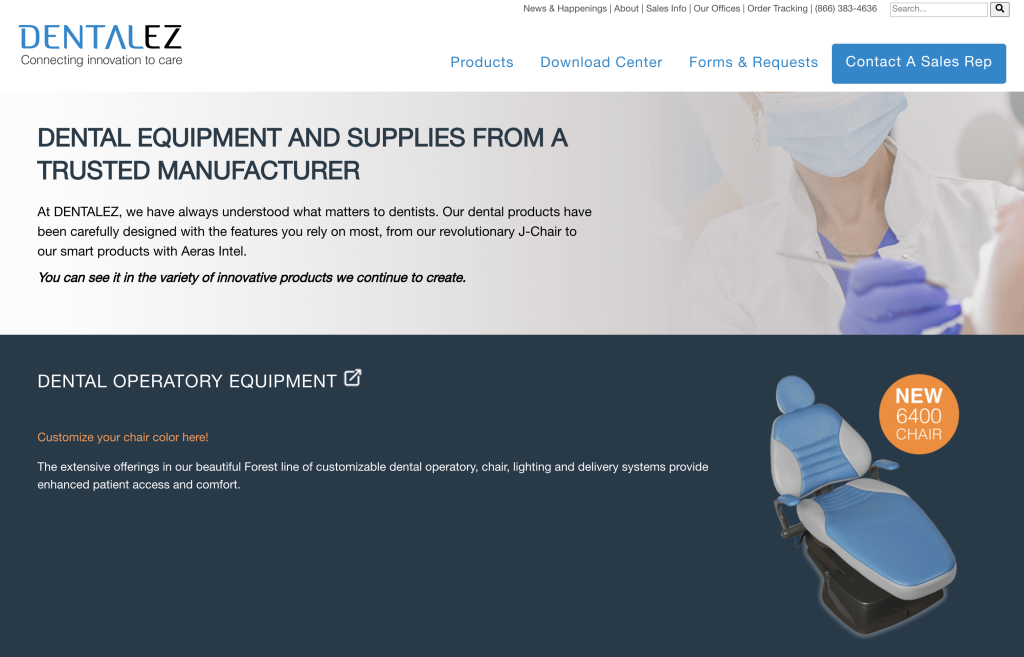
Notable Products:
- CORE Chair: Built with cast iron and cast aluminum construction, featuring a 450lb lift capacity, drop-down arms, and programmable preset positions.
- NuSimplicity Chair: Offers the widest height adjustment range available, making it the preferred choice for many DSOs, institutions, and government facilities.
DENTALEZ chairs emphasize modular reliability and operational simplicity. While recent models have begun incorporating basic posture analytics, the brand’s primary focus remains on building dependable equipment with exceptional longevity. Their J-Chair helped usher in the era of sit-down dentistry, demonstrating their historical importance in shaping modern dental practice.
For practices prioritizing long-term reliability over cutting-edge features, DENTALEZ offers an appealing combination of durability, simplicity, and value.
4. KaVo (Planmeca Group): German-Engineered Precision
KaVo, now part of the Planmeca Group since 2022, maintains its reputation for precision engineering and infection control excellence. Their RELAXline chairs incorporate several advanced technologies directly addressing contemporary practice challenges:
- 270nm UV-C emitters integrated into chair surfaces
- Nano-silver upholstery that reduces surface bacteria by 99.2% between patients
- Articulating headrests specifically designed for complex implantology workflows
These innovations reflect KaVo’s commitment to supporting advanced procedures with purpose-designed equipment. Their chairs excel in practices focusing on implantology and surgical procedures, where precise patient positioning and infection control are paramount.
KaVo chairs typically range from $15,000-$35,000 depending on configuration and feature set. While representing a significant investment, their documented durability and precision engineering offer compelling long-term value for specialized practices.
5. Midmark: Sustainability Leaders
Midmark, founded in 1915 in Minster, Ohio, has evolved from its origins as a concrete mixer manufacturer to become a leader in environmentally conscious dental equipment. Their commitment to harmonizing space, technology, and workflows positions their chairs as excellent options for practices seeking to balance environmental responsibility with clinical functionality.
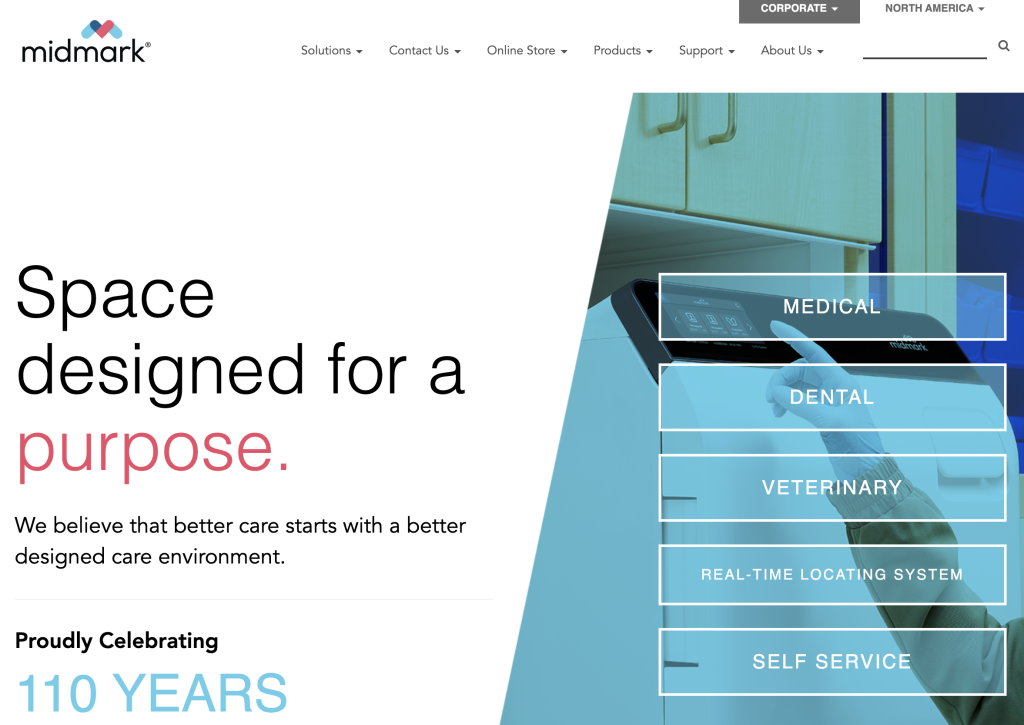
In 2025, their EcoVu series incorporates:
- 45% recycled ocean plastics in chair frames, aligning with EU sustainability mandates
- Water-saving flush systems (0.7L/min) representing significant conservation progress
- Energy-efficient hydraulic systems reducing power consumption by up to 30%
These sustainability features are increasingly important as regulatory requirements tighten and patients demonstrate preference for environmentally responsible practices. According to the Dental Sustainability Alliance, practices implementing water-efficient dental chairs can save approximately 98,000 liters annually in a four-operatory setting.
Midmark chairs range from $7,000-$15,000, making them accessible options for practices seeking to balance environmental responsibility with budget considerations.
6. Belmont (Takara Belmont): Premium Patient Experience
Belmont Equipment, a division of Takara Belmont, specializes in chairs that provide exceptional patient comfort without compromising clinical functionality. Their chairs utilize pressure-mapped cushioning technology that reduces patient repositioning by up to 41% during procedures.
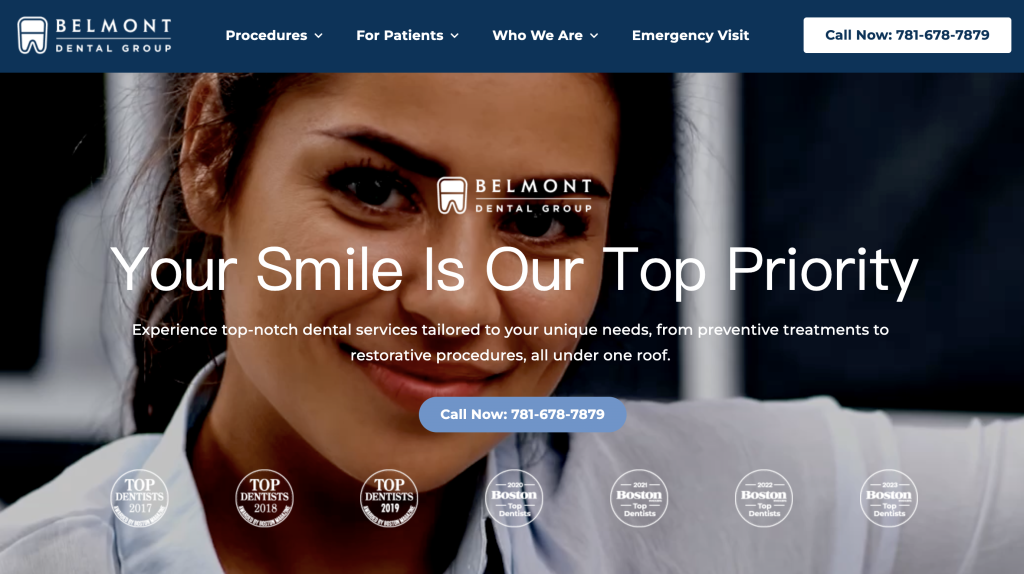
Featured Models:
- Voyager III: Entry-level chair starting from £10,995 excl. VAT
- Eurus S1: Mid-range option from £17,650 excl. VAT
- Eurus S6: Advanced model from £21,795 excl. VAT
- Eurus S8: Premium offering from £25,780 excl. VAT
Belmont chairs are distinguished by their seamless integration with advanced hydraulics and motor systems, facilitating smooth and quiet adjustments. This feature is vital for maintaining a calm environment conducive to dental procedures. They offer extensive customization options, from upholstery colors to accessories, allowing practices to tailor both aesthetics and functionality to specific requirements.
For practices where patient perception of luxury directly impacts business outcomes, Belmont chairs deliver undeniable aesthetic appeal combined with clinical functionality.
7. Morita (J. Morita Corporation): Imaging Integration Specialists
J. Morita Corporation, with roots dating back to 1916, has evolved into a global leader in dental X-ray diagnostics and specialty equipment. Their Veraview X800 chairs integrate CBCT positioning guidance that reduces scan retakes by 28%—delivering significant efficiency and radiation safety improvements.
Product Lineup:
- Signo G10 II S Series: Mid-range treatment centers ($20,000-$30,000) with compact designs and multiple configuration options
- Signo T500 Series: Premium flagship units ($35,000-$50,000) featuring Porsche Studio-influenced design elements
- Soaric Series: Technologically advanced chairs ($30,000-$45,000) with automated cleaning functions
While Morita’s radiation-shielded designs excel in diagnostic applications, they may offer less ergonomic adjustability for general procedures compared to some competitors. Their specialized focus makes them particularly suitable for practices with heavy emphasis on advanced imaging and diagnostic procedures.
8. Shinhung: Humidity-Resistant Innovation
Shinhung dominates Southeast Asian markets with chairs specifically engineered for challenging environmental conditions. Their corrosion-resistant alloy frames are rated for 95% humidity environments—addressing a critical concern in tropical regions.
Their auto-flush systems save approximately 25,000L of water per chair annually, demonstrating their commitment to sustainability alongside durability. With manufacturing facilities representing the largest dental equipment production site in Korea, Shinhung produces a diverse array of dental products beyond chairs.
Priced between $11,000-$12,000, Shinhung chairs offer excellent value for practices operating in challenging environments where standard equipment might suffer accelerated deterioration. Their specialized designs address specific regional needs while maintaining competitive pricing.
9. NSK: Aerosol Management Specialists
NSK has built its reputation on exceptional handpiece technology, which now extends to their comprehensive chair systems. Their Isolate Pro series demonstrates this expertise through integrated aerosol management—reducing spread by 62% via HEPA-13 filtration systems.
Their autoclavable handpiece connectors create streamlined operative workflows, particularly beneficial for high-speed procedures. For practitioners specializing in procedures generating significant aerosols, NSK’s focus on containment offers tangible safety benefits beyond standard infection control measures.
While less established in the North American chair market compared to some competitors, NSK’s specialized focus on aerosol management represents an increasingly important consideration in post-pandemic practice design.
10. Anya Medical: Ergonomic Innovation
Anya Medical has established itself as a significant player in the dental chair market through its focus on ergonomic design and technological innovation. Operating a 10,000-square-meter R&D and manufacturing facility in Foshan, China, the company has developed 47 patented technologies addressing core practitioner challenges.
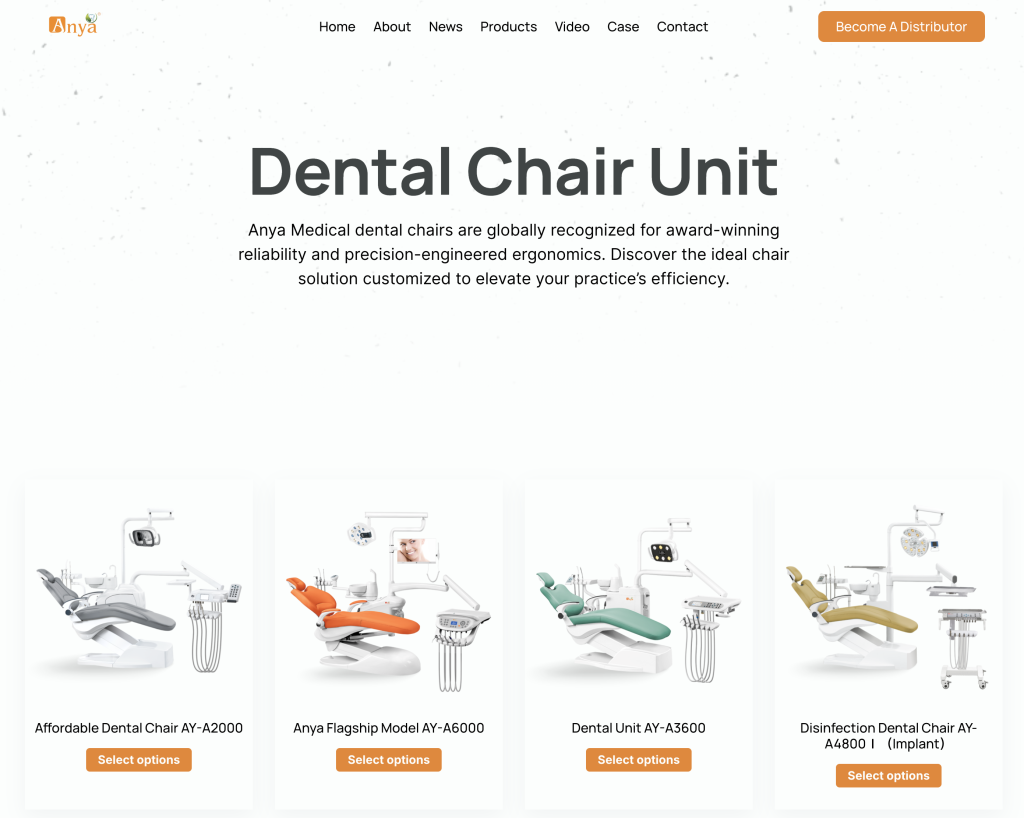
Featured Models:
- AY-A8000: Their flagship smart chair features AI-powered adjustments that reduce practitioner injury risks by ≥65%, achieving 99.99% pathogen reduction in 90 seconds through hybrid disinfection systems.
- AY-A3000: This versatile model incorporates ergonomic designs that reduce neck strain by 66% while enabling 14% faster procedures through optimized positioning.
- AY-A4800Ⅱ: Specifically engineered for implantology precision with corrosion-resistant alloy frames and advanced patient positioning systems.
Anya’s chairs feature several distinctive technologies:
- Pressure-Sensitive Lumbar Support: 12-point sensor arrays dynamically adjust seat depth during procedures, reducing lower back strain by up to 68%.
- Auto-Retract Armrests: Infrared sensors detect patient entry/exit patterns, eliminating awkward practitioner leans that cause 41% of documented neck injuries.
- EcoFlow Water Management: Their 0.5L/minute flush systems save 40% more water than standard 1.2L systems, translating to approximately 98,000L annual savings for a typical four-operatory practice.
According to clinical trials published in the International Journal of Dental Ergonomics, practices using Anya’s chairs report 41% fewer staff absences due to musculoskeletal issues and 14% faster procedure times due to optimized ergonomics.
Modern Innovations Transforming Dental Chair Design
The 2025 dental chair landscape incorporates several transformative technologies that reshape both practitioner capabilities and patient experiences:
AI-Powered Ergonomic Adjustments
Modern dental chairs now employ artificial intelligence to reduce practitioner injury risks. Advanced systems incorporate:
- Body Position Tracking: Real-time analysis of practitioner posture with suggestions for ergonomic improvements
- Pressure Distribution Monitoring: Dynamic adjustment of seat contours to maintain neutral positioning
- Predictive Movement Assistance: AI-driven anticipation of positional needs based on procedure type
These technologies directly address the high rate of musculoskeletal disorders among dental professionals. According to the CDC’s 2025 guidelines, chairs must now reduce practitioner injury risks by ≥65%—a standard achievable only through intelligent assistance systems rather than merely passive support.
Advanced Infection Control Systems
Post-pandemic patient expectations have permanently elevated infection control standards. Contemporary dental chairs employ sophisticated systems to address these concerns:
- UV-C Disinfection: 270nm wavelength systems achieving 99.99% pathogen reduction in 90 seconds between patients
- Antimicrobial Surface Technologies: Nano-silver and copper-infused materials providing continuous protection against MRSA and other pathogens
- Waterline Purification: Integrated filtration and sterilization systems preventing biofilm formation
Recent Johns Hopkins trials demonstrated 33% fewer post-procedure infections in clinics using these advanced systems, providing quantifiable clinical benefits beyond mere regulatory compliance.
Sustainability as Standard Practice
Environmental responsibility has evolved from marketing advantage to regulatory requirement. Modern chairs incorporate multiple resource-efficient features:
| Feature | 2020 Standard | 2025 Requirement | Impact |
|---|---|---|---|
| Water Consumption | 1.2L/minute | ≤0.8L/minute | 40% reduction |
| Energy Recovery | 12-18% | 25-30% | +67% efficiency |
| Recycled Materials | 20-25% | ≥45% | Double sustainability |
| Operational Lifespan | 8-10 years | 12-15 years | +50% longevity |
These improvements deliver measurable environmental benefits while reducing operational costs. A typical four-operatory practice implementing current-generation water conservation systems can save approximately 98,000 liters annually.
Patient-Centered Design Innovations
While practitioner ergonomics drives many advancements, patient comfort technologies have also evolved significantly:
- Pressure-Mapped Cushioning: Multi-density memory foam systems that distribute weight evenly during extended procedures
- Climate-Controlled Surfaces: Upholstery with active temperature management preventing both cold sensation and uncomfortable heat buildup
- Anxiety Reduction Systems: Integrated audio, visual, and tactile elements creating more relaxing treatment environments
These features directly impact patient satisfaction and retention. Studies show practices implementing advanced comfort technologies report 23% higher patient satisfaction scores and 17% improved case acceptance rates for extensive treatment plans.
Making an Informed Procurement Decision
When evaluating dental chair options, consider these strategic factors:
- Total Cost of Ownership: Look beyond initial purchase price to consider operational costs, maintenance requirements, and expected lifespan. Chairs with energy-efficient features and extended warranties often deliver superior long-term value despite higher upfront costs.
- Clinical Specialization Needs: Ensure selected models align with your practice focus. Implantology practices benefit from chairs with specialized headrests and stability features, while general practices may prioritize rapid patient turnover capabilities.
- Growth Planning: Consider future-proofing capabilities through modular designs that accommodate technology upgrades as your practice evolves. Open architecture systems supporting third-party integration offer greater flexibility.
- Staff Well-being: Prioritize ergonomic features that support practitioner health. The significant costs associated with staff turnover and work-related injuries make investment in ergonomic equipment economically sound.
- Patient Demographics: Evaluate models based on your specific patient population. Practices serving geriatric patients benefit from chairs with easier ingress/egress, while pediatric specialists need adaptable designs for smaller patients.
By approaching chair selection as a strategic investment rather than merely an equipment purchase, practices can secure technology that enhances clinical outcomes, practitioner longevity, and business sustainability.
Conclusion: Balancing Innovation and Practical Value
The 2025 dental chair marketplace offers unprecedented technological sophistication across all price ranges, making quality equipment accessible to practices at various developmental stages. When navigating these options, focus on aligning chair features with your specific clinical needs while considering long-term operational implications.
The most successful procurement decisions typically balance immediate requirements with strategic growth plans, selecting chairs that offer sufficient technological advancement without unnecessary features that inflate costs without delivering practical benefits.
For practices ready to experience these innovations firsthand, most manufacturers offer demonstration programs allowing practitioners to evaluate chairs in their own clinical environments before making significant investments. This hands-on approach ensures selected equipment truly enhances both clinical capabilities and operational efficiency.



